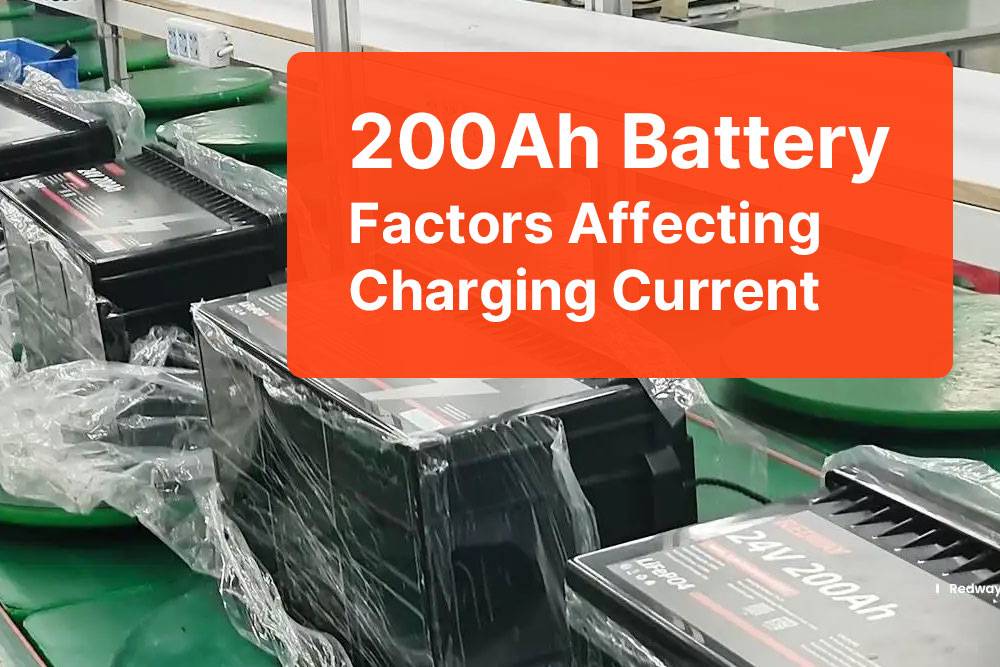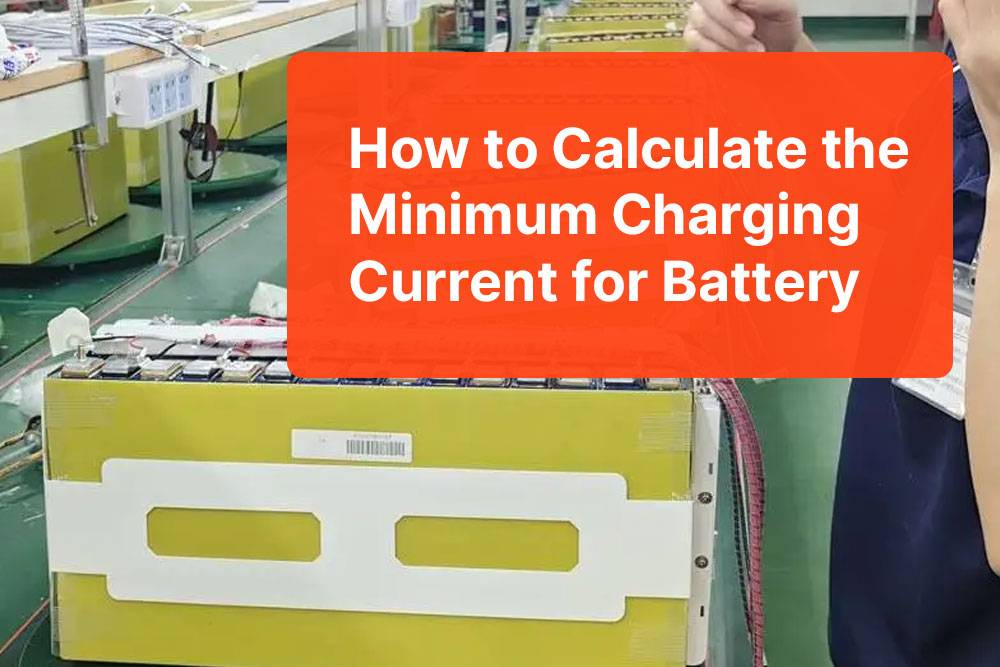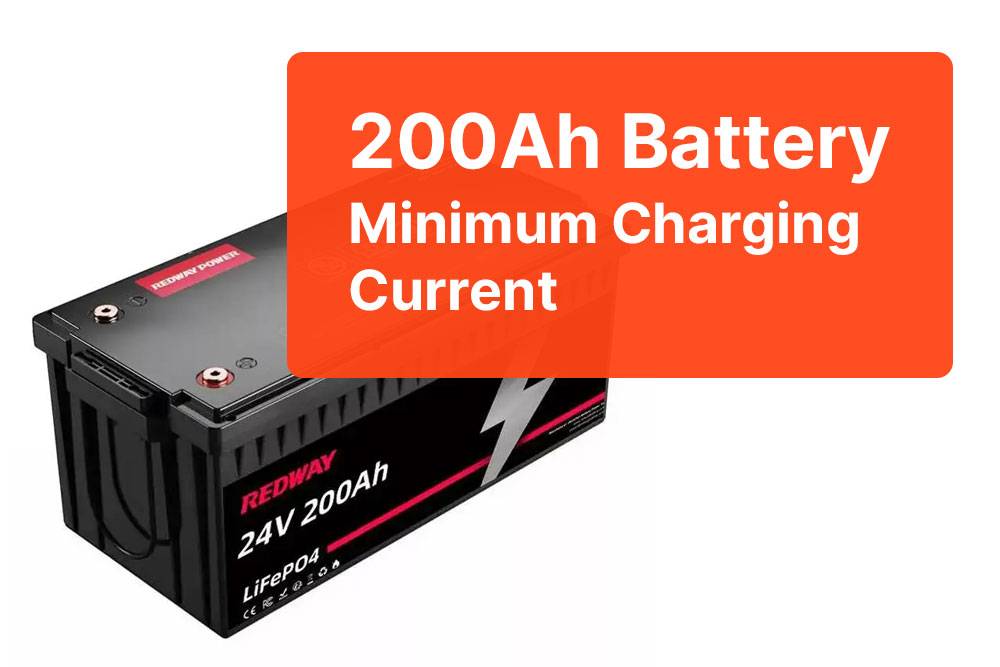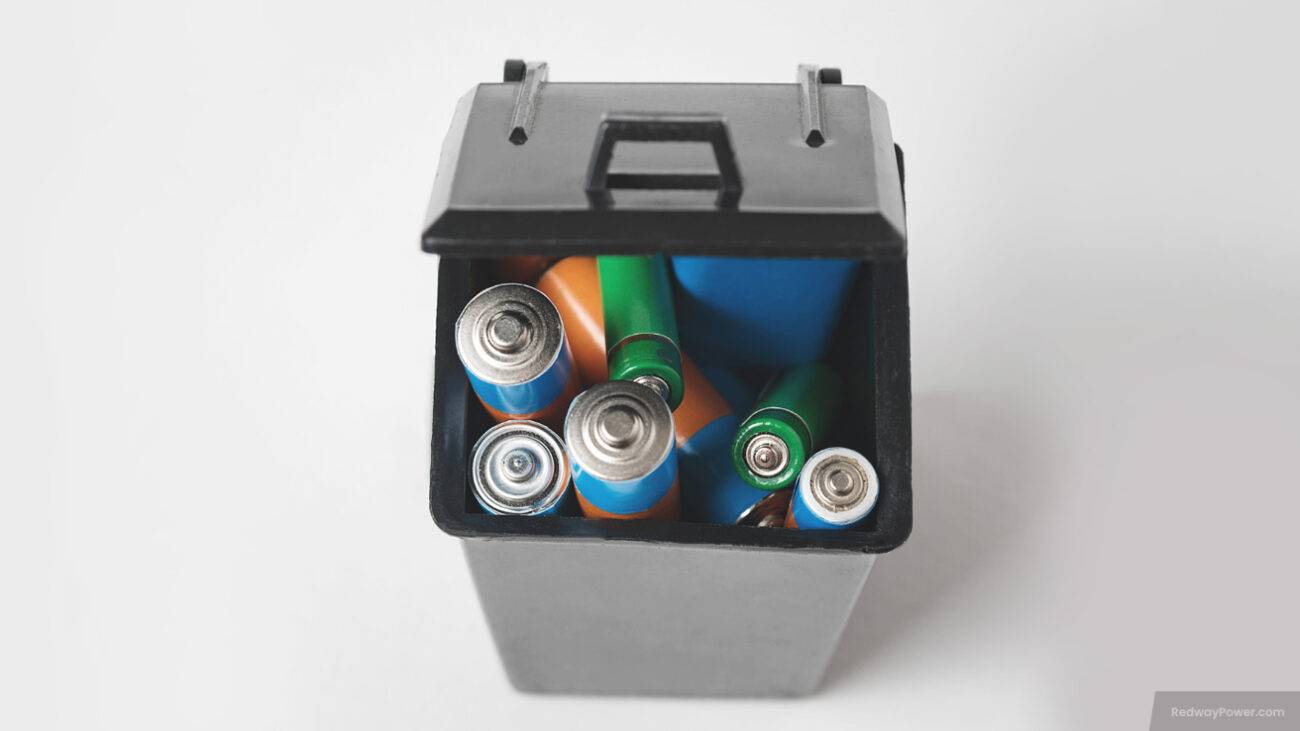-
Minimum Charging Current Calculation: As a general guideline, it is recommended to provide a minimum charging current of at least 10% of the battery’s capacity. For a 200Ah battery, this translates to a minimum charging current of 20A. This ensures that the battery receives an adequate amount of current during the charging process to optimize its performance and lifespan.
-
Battery Type and Manufacturer Recommendations: It is important to note that the minimum charging current may vary depending on the battery type and specific manufacturer’s recommendations. Different battery chemistries and designs may have specific requirements for charging currents. Therefore, it is crucial to consult the battery manufacturer’s guidelines and specifications for accurate calculations.
-
Optimal Charging: Providing the minimum charging current ensures that the battery receives sufficient energy during the charging process. This helps in maintaining the battery’s capacity, performance, and overall health. It is important to avoid charging the battery with a current below the minimum recommended value, as it may result in undercharging and reduced battery performance.
Table of Contents
ToggleUnderstanding Battery Charging Current
Understanding battery charging current is crucial for maintaining the health of your 200Ah battery. Let’s explore this concept and its significance for maximizing battery longevity.
- Charging Current Basics: Charging current refers to the flow of electrical energy into the battery during charging, measured in amps (A) or milliamps (mA). It determines how quickly your battery charges and can vary based on factors like charger capabilities and battery state.
- Importance of Minimum Charging Current: Providing an appropriate minimum charging current is vital for effective recharging without causing damage. Insufficient current leads to undercharging, reducing performance, while excessive current can cause overheating and damage.
- Determining Optimal Current: Consult your battery’s documentation or manufacturer for recommendations on the optimal minimum charging current. Using a charger with adjustable settings allows better control to match current with battery needs, ensuring efficient recharging.
By understanding and implementing the appropriate charging current for your 200Ah battery, you can ensure its longevity and optimal performance.
Importance of Minimum Charging Current for 200Ah Batteries
-
Longevity and Performance: Providing the minimum charging current is essential for ensuring the longevity and optimal performance of 200Ah batteries. Insufficient charging current can result in undercharging, leading to reduced battery capacity and compromised performance. By providing an adequate charging current, users can maximize the lifespan and overall health of their batteries.
-
Preventing Undercharging: The minimum charging current helps prevent undercharging, which occurs when the battery does not receive enough charge during the charging process. Undercharging can lead to sulfation, a condition where sulfate crystals accumulate on the battery plates, negatively affecting battery capacity and performance. By providing the recommended minimum charging current, users can avoid undercharging and maintain the battery’s optimal functioning.
-
Optimizing Battery Health: Adequate charging current ensures that the battery is charged within a reasonable time, preventing overcharging or extended charging periods. This helps in maintaining the battery’s temperature, reducing the risk of overheating, and preserving its overall health. By adhering to the recommended minimum charging current, users can optimize the charging process and enhance the longevity and performance of their 200Ah batteries.
Factors Affecting Charging Current
-
Battery Capacity and Health: The capacity and health of the battery directly impact the charging current. Batteries with higher capacities may require higher charging currents to charge efficiently. Additionally, the health of the battery, including factors such as internal resistance, can influence the charging current and overall charging performance.
-
State of Charge (SoC): The state of charge of the battery before plugging it in for charging is another crucial factor. Batteries with higher states of charge may require lower charging currents, while batteries with lower states of charge may require higher charging currents to reach their optimal charge levels.
-
Maximum Charging Capacity: The maximum charging capacity of the vehicle or the charging station can limit the charging current. If the charging capacity is lower than the battery’s requirements, the charging current may be limited, resulting in longer charging times.
-
Charging Station Power: The power output of the charging station plays a significant role in determining the charging current. Higher power output allows for a higher charging current, resulting in faster charging times. It is important to consider the power capabilities of the charging station when aiming for faster charging speeds.
-
Environmental Conditions: Environmental factors such as temperature and weather conditions can impact the charging current. Extreme temperatures, whether hot or cold, can affect the battery’s ability to accept and deliver a higher charging current. It is important to consider these environmental conditions to ensure optimal charging performance.

Understanding these factors helps optimize the charging process, ensuring longevity and efficiency for your 200Ah battery.
Recommended Minimum Charging Current for 200Ah Batteries
Charging your 200Ah battery requires careful consideration of the minimum recommended charging current. This ensures efficient charging, prolonging battery lifespan and optimizing performance.
Factors such as battery type, temperature, and desired charge time influence the minimum charging current. Generally, aim for 10-20% of battery capacity, translating to 20A to 40A for a 200Ah battery.
Exceeding maximum charging current can damage batteries, emphasizing the importance of finding the right balance. Consult manufacturer guidelines for accurate calculations and safe handling practices.
How to Calculate the Minimum Charging Current for Your Battery
-
Battery Capacity: The first step is to determine the capacity of your battery, typically measured in ampere-hours (Ah). This information is usually provided by the battery manufacturer and can be found on the battery label or documentation.
-
Charging Time: Next, decide on the desired charging time for your battery. This depends on factors such as the battery’s current state of charge and the charging rate you want to achieve. It’s important to consider the battery’s recommended charging time to ensure optimal charging and battery health.
-
Calculation: To calculate the minimum charging current, divide the battery’s capacity by the desired charging time. This will give you the average discharge rate per hour. For example, if your battery has a capacity of 100Ah and you want to charge it in 10 hours, the minimum charging current would be 10A (100Ah / 10 hours = 10A).
-
Other Factors: It’s important to note that the calculated minimum charging current provides a rough estimate. Other factors such as battery chemistry, efficiency, and charging losses can affect the actual charging current needed. Additionally, it’s recommended to consult the battery manufacturer’s guidelines for specific charging recommendations.

Tips for Properly Charging Your 200Ah Battery
-
Use Suitable Charger: To ensure proper charging, it is important to select a charger specifically designed for deep cycle batteries. Deep cycle battery chargers are designed to provide the appropriate voltage and current for efficient and safe charging. Using a charger that is not suitable for deep cycle batteries may result in undercharging or overcharging, which can affect the battery’s performance and lifespan.
-
Follow Manufacturer Guidelines: Each battery may have specific charging requirements, and it is essential to follow the manufacturer’s guidelines for voltage and current settings. These guidelines provide the recommended charging parameters that are optimized for the specific battery model. By adhering to the manufacturer’s instructions, you can ensure that the battery is charged correctly and avoid potential damage.
-
Prevent Overcharging: Overcharging a battery can be detrimental to its health and longevity. It is important to monitor the state of charge (SoC) during the charging process. This can be done using a battery monitor or by regularly checking the voltage or specific gravity of the battery. Once the battery reaches its recommended state of charge, it is important to stop the charging process to prevent overcharging. Overcharging can lead to battery damage, reduced capacity, and a shorter lifespan.
FAQs
How to manage heat during charging for battery lifespan?
-
Install Charging Stations in Cool, Well-Ventilated Locations: When setting up charging stations, choose cool areas with good air circulation. This helps prevent excessive heat buildup during the charging process.
-
Avoid Direct Sunlight: Charging batteries in direct sunlight can lead to uneven heating and potential damage. Whenever possible, position the charging stations away from direct sunlight to maintain a more consistent temperature.
-
Ensure Sufficient Ventilation: If you are charging batteries in a confined space, such as a storage room or enclosure, it is crucial to ensure adequate ventilation. Proper ventilation helps dissipate heat generated during charging, preventing overheating and potential damage to the batteries.
Why don’t Lithium Ion batteries produce hydrogen gas during charging?
-
Reduction of Residual Moisture: Lithium-ion batteries have an inherent ability to minimize the production of hydrogen gas during charging. This is attributed to the reduction of residual moisture on the anode, where the lithium reacts with moisture in the air. As a result, the formation of hydrogen gas is significantly reduced.
-
Safety and Stability: The absence of hydrogen gas production in lithium-ion batteries enhances their safety and stability. Hydrogen gas can be flammable and pose a potential safety hazard. By eliminating this gas production, lithium-ion batteries offer a safer and more reliable energy storage solution.
What are considerations for ventilation in closed casings?
-
Maintain Air Quality: It is essential to maintain air quality within the casing by preventing the buildup of contaminants or pollutants. This can be achieved through the use of filters or other air purification methods.
-
Ensure Proper Airflow: Proper airflow is vital for effective ventilation in closed casings. This can be achieved by designing the casing with appropriate ventilation openings or by using fans or other mechanical ventilation systems.
-
Select the Right Ventilation System: Choosing the right ventilation system for the specific requirements of the casing is crucial. Factors such as the size of the casing, the airflow rate needed, and the desired level of ventilation control should be considered when selecting a ventilation system.
-
Consider Ingress Protection: Ingress protection refers to the ability of the ventilation system to prevent the entry of dust, water, or other foreign materials into the casing. Selecting a ventilation system with appropriate ingress protection measures is important for maintaining the integrity of the enclosed system.
How to use Peukert formula for battery capacity at a given discharge current?
-
The Peukert Formula: The Peukert formula, Cp = I^n * t, is used to calculate the available capacity of a battery at a specific discharge current. Cp represents the capacity available, I is the discharge current, n is the Peukert exponent, and t is the time.
-
Discharge Current: Determine the discharge current at which you want to calculate the battery capacity. This is the rate at which the battery is being discharged, typically measured in amperes (A).
-
Peukert Exponent: The Peukert exponent (n) is a characteristic value that varies for different battery chemistries and manufacturers. It reflects the relationship between the discharge current and the battery capacity. The Peukert exponent can be obtained from manufacturer specifications or through experimentation.
-
Time: Consider the time (t) for which the battery will be discharged at the chosen current. This could be in hours, minutes, or any other appropriate unit of time.
-
Calculation: Plug in the values of the discharge current (I), Peukert exponent (n), and time (t) into the Peukert formula, Cp = I^n * t, to calculate the available capacity of the battery at the given discharge current.
What is Peukert’s Law, and how does it impact battery capacity at different rates?
-
Peukert’s Law: Peukert’s Law, formulated by Wilhelm Peukert in 1897, describes the relationship between the rate of discharge and the available capacity of rechargeable lead-acid batteries. According to this law, as the rate of discharge increases, the available capacity of the battery decreases. In simple terms, batteries will have less usable energy when discharged at higher rates.
-
Impact on Battery Capacity: The impact of Peukert’s Law on battery capacity is significant. When a battery is discharged at a higher rate, the chemical reactions within the battery cannot keep up with the demand for current. This results in a reduction in the available capacity, meaning the battery will run out of energy sooner than expected.
-
Understanding Discharge Rates: It is crucial to consider the discharge rate when estimating the capacity of a battery. Higher discharge rates lead to a more pronounced reduction in available capacity, while lower discharge rates allow for a higher utilization of the battery’s energy. This knowledge helps in selecting the appropriate battery for specific applications and optimizing battery performance.
How to calculate the remaining power output of a battery accurately?
-
Measure Voltage and Current: One method involves measuring the voltage and current of the battery over time. By monitoring these values and analyzing the discharge curve, it is possible to estimate the remaining capacity. However, this method may require additional calculations and considerations.
-
Use Battery Testers or Multimeters: Another approach is to utilize battery testers or multimeters to measure the remaining charge. These devices provide a direct measurement of the battery’s capacity and can be more accurate in some cases.
-
Consider Battery Chemistry, Age, and Usage Patterns: It is important to note that accurately calculating the remaining power output of a battery can be challenging due to various factors. Factors such as battery chemistry, age, and usage patterns can affect the accuracy of the calculations. It is recommended to consider these factors and use a combination of methods for a more accurate estimation.
How to determine the state of charge of a battery, and benefits of using an amp hour meter?
-
Measuring Voltage and Using Charts: One method involves measuring the battery’s voltage and referring to voltage versus state of charge charts specific to the battery type. By comparing the measured voltage to the chart, one can estimate the state of charge. However, this method may require additional calculations and considerations.
-
Amp Hour Meter: Another approach is to use an amp hour meter, which measures the current flowing in and out of the battery. This device provides an accurate estimation of the remaining capacity and helps monitor battery health. By using an amp hour meter, one can optimize battery usage, prevent over-discharge, and prolong battery life.
-
Benefits of Using an Amp Hour Meter: Using an amp hour meter offers several benefits. It allows for real-time monitoring of the battery’s state of charge, ensuring that it is not over-discharged or underutilized. Amp hour meters also help in identifying any abnormalities or inefficiencies in the battery system, enabling timely maintenance and maximizing battery performance.
How to calculate the charging time of Gel, AGM, and Lithium Ion batteries?
-
Gel and AGM Batteries: For Gel and AGM batteries, a rule of thumb suggests that the minimum charging current should be 15 to 25% of the battery’s capacity. This means that for a 100Ah Gel or AGM battery, the minimum charging current would be 15 to 25A. However, it is important to note that specific battery manufacturer recommendations should be followed for accurate calculations.
-
Lithium Ion Batteries: The charging time of Lithium Ion batteries depends on the charge rate, which is typically expressed as a multiple of the battery’s capacity (C-rate). A recommended charge rate range is 0.5C to 1C, where C represents the battery’s capacity. For example, for a 100Ah Lithium Ion battery, a charge rate of 0.5C to 1C would translate to 50A to 100A charging current. Again, it is essential to refer to the manufacturer’s specifications for precise calculations.
Why is temperature compensation important for battery chargers, and device protection?
-
Impact of Temperature: Temperature has a significant impact on battery performance and lifespan. Extreme temperatures can affect the capacity, efficiency, and overall health of batteries. Charging or discharging batteries at high or low temperatures can lead to reduced capacity and potential damage.
-
Optimal Charging: Temperature compensation helps address the impact of temperature on battery charging. By adjusting the charging voltage and current based on the ambient temperature, temperature compensation ensures that batteries are charged optimally. This prevents overcharging or undercharging, which can negatively affect battery performance and lifespan.
-
Enhanced Device Protection: Proper temperature compensation not only maximizes battery lifespan but also enhances device protection. By preventing overcharging or undercharging, temperature compensation minimizes the risk of damage to devices caused by improper charging. This helps maintain the integrity and reliability of the devices powered by the batteries.
How to calculate the charging current for gel and AGM batteries, and their maximum currents?
-
Charging Current Calculation: A general guideline for calculating the charging current for gel and AGM batteries is to use a maximum current of 50% of their capacity. For example, for a 100Ah gel battery, the maximum charging current would be 50A. Similarly, for a 100Ah AGM battery, the maximum charging current would be 30A. However, it is important to note that specific battery manufacturer recommendations should be followed for accurate calculations.
-
Maximum Current Considerations: The maximum current for gel and AGM batteries refers to the current that the battery can safely handle without causing damage. This value is typically specified by the battery manufacturer and may vary depending on the battery’s design and construction. It is crucial to adhere to the manufacturer’s specifications to avoid overloading the battery and compromising its performance and lifespan.


